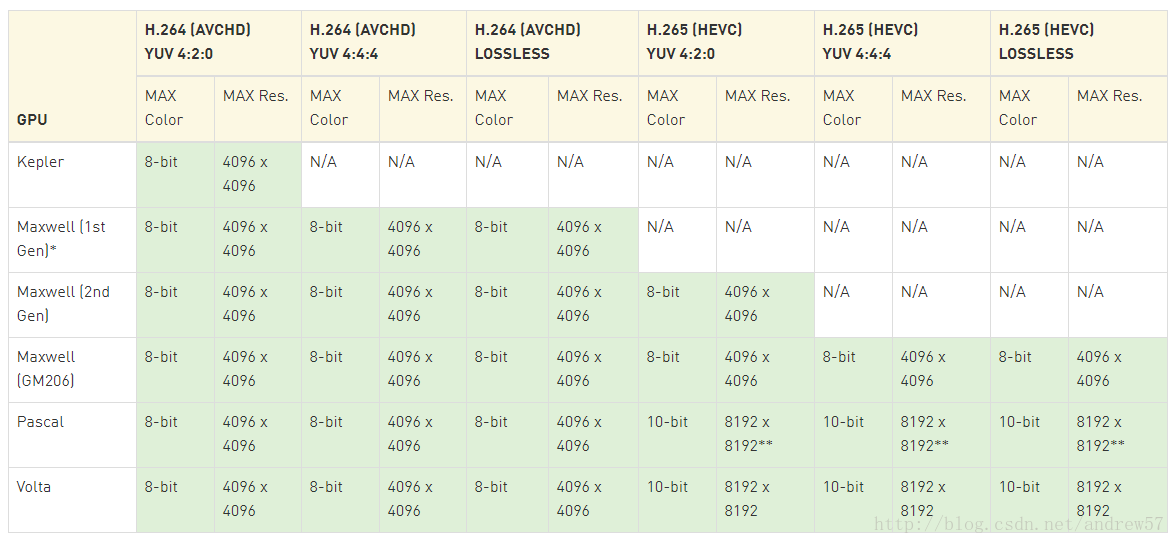- RTSP协议规范与SmartMediaKit播放器技术解析
音视频牛哥
RTSP播放器轻量级RTSP服务大牛直播SDK音视频机器视觉人工智能rtsp播放器pythonrtsp播放器rtspplayer大牛直播SDK
在实时流媒体传输领域,RTSP(Real-TimeStreamingProtocol)协议作为标准规范,为音视频数据的高效传输提供了坚实基础。而大牛直播SDK的rtsp播放器,则是在此基础上构建的高性能解决方案,广泛应用于多种场景,如安防监控、远程教学、直播互动等。本文将深入探讨RTSP协议规范,并结合大牛直播SDK的rtsp播放器,剖析其技术细节与优势。RTSP协议规范概述RTSP协议是一种用于
- ffmpeg+ubuntu16.04编译ffmpeg库
小gpt&
QT+FFMPEG实战ffmpeglinux
个人使用环境:ubuntudesktop16.04+ffmpeg4.2.1以下的库进行完整编译ffmpeg介绍FFmpeg是一个开源的多媒体框架,广泛用于处理音频、视频、字幕等多媒体数据。它包含了丰富的工具和库,能够进行音视频的编解码、转码、流媒体处理、滤镜应用等操作。FFmpeg是许多多媒体应用程序和工具的核心引擎,功能强大且灵活,支持几乎所有常见的音视频格式。FFmpeg的主要组成部分ffmp
- QT多媒体播放器类:QMediaPlayer
程序先锋
QT界面开发qt开发语言
QMediaPlayer是QtMultimedia模块中的核心类,用于播放音频和视频媒体文件。它支持本地文件、网络流媒体以及实时数据源,具备播放控制、状态管理、元数据访问等功能。QMediaPlayer的基本用法可能包括设置媒体源、控制播放(播放、暂停、停止)、调整音量、监听播放状态变化等。1.信号(Signals)信号用于通知外部对象播放器状态、媒体属性和错误事件的变化。(1)媒体改变voidm
- Bluetooth Profile Specification之(AVRCP篇)5.0 AVRCP简介
心跳包
蓝牙篇之蓝牙协议规范蓝牙
蓝牙篇之BluetoothProfileSpecification深入详解汇总目录1.什么是AVRCP?2.协议栈模型关注文末微信公众号,回复【蓝牙规范】,即可获取AVRCP英文版协议。1.什么是AVRCP?字面意思音频/视频远程控制协议。AVRCP定义的命令和信息是通过AVCTP通过传输出去的。AVRCP协议不处理音视频流,支持这个协议的设备可以通过A2DP来分发流媒体数据。1.5版本到1.6版
- Python中使用vlc库实现视频播放功能
小白教程
pythonpython音视频开发语言Python视频播放功能Python中使用vlc库vlc视频播放
文章目录前言1.环境准备1.1Python安装1.2选择Python开发环境1.3安装必要库2.基础播放示例3.常用播放控制功能4.事件监听5.播放网络流媒体6.结合GUI库制作视频播放器(以Tkinter为例)前言本教程主要包含打开文件、播放和停止按钮,能够实现基本的视频播放控制功能。1.环境准备1.1Python安装访问Python官方网站,根据你的操作系统(Windows、Mac或Linux
- HarmonyOS NEXT开发实战:视频全屏切换案例
一晃有一秋
鸿蒙鸿蒙实例harmonyos华为鸿蒙鸿蒙系统android音视频
介绍本示例介绍了@ohos.multimedia.media组件和@ohos.window接口实现媒体全屏的功能。该场景多用于首页瀑布流媒体播放等。效果图预览使用说明:点击全屏按钮,横屏媒体窗口。点击恢复窗口按钮,恢复媒体窗口。实现步骤初始化@ohos.multimedia.media的AVPlayer。asyncInit():Promise{awaitthis.release();constco
- 工业相机视频播放(RTSP)
CHHC1880
工业相机rtspffmpeg推流
需求:工业相机图像能在rtsp流上播放。实现手段:C#利用工业相机的SDK拿到图后,通过ffmpeg管道推给流媒体程序,再转流播放。模拟测试:两张图在rtsp上进行轮播
- IP系统中的SDP会话描述协议深度解析(一)
一个广电工程师
广播电影电视专业技术tcp/ip网络协议网络
SDP核心概念会话描述协议(SessionDescriptionProtocol,简称SDP)作为多媒体会话的元数据载体,其规范定义详见RFC4566标准文档("https://datatracker.ietf.org/doc/html/rfc4566")。该协议作为跨平台会话描述的通用语法框架,广泛应用于SIP通信系统、RTSP流媒体传输、电子邮件服务及Web服务体系,在广播电视行业的IP化进程
- Python 实现海康机器人工业相机 MV-CS050-10GC 的实时显示视频流及拍照功能(实时显示视频流同时可以进行拍照)
恋上钢琴的虫
数码相机
参考链接:https://www.cnblogs.com/HanYork/p/17388506.htmlhttps://www.cnblogs.com/miracle-luna/p/16960556.html#5138211Flask搭建流媒体服务器:使用Flask搭建一个流媒体服务器_multipart/x-mixed-replace;boundary=frame-CSDN博客
- webgl threejs 云渲染(服务器渲染、后端渲染)解决方案
allenjiao
Threejswebglthreejs云渲染后端渲染服务器渲染云流化三维云渲染
云渲染和流式传输共享三维模型场景1、本地无需高端GPU设备即可提供三维项目渲染云渲染和云流化媒体都可以让3D模型共享变得简单便捷。配备强大GPU的远程服务器早就可以处理密集的处理工作,而专有应用程序,用户也可以从任何个人设备查看全保真模型并与之交互。2、云流媒体实现多终端联动共享价值更高在项目应用场景中,在大屏、电脑、平板、手机和其它移动终端,可以实现多屏联动、远程协助,三维云流化让客户访问时可以
- HarmonyNext实战:基于ArkTS的高性能音视频处理应用开发
harmonyos-next
HarmonyNext实战:基于ArkTS的高性能音视频处理应用开发引言在音视频处理领域,实时性和性能是关键。随着HarmonyNext生态系统的不断发展,开发者可以利用ArkTS语言构建高性能的音视频处理应用。本文将深入探讨如何利用ArkTS开发一个音视频处理应用,重点介绍音频处理、视频编解码以及实时流媒体传输的实现。我们将从理论基础出发,逐步构建一个完整的应用,并通过优化技巧提升性能。1.音视
- a16z Speedrun:加速科技与娱乐的未来
花生糖@
技术创业之路:从创意到企业科技娱乐AI
引言a16z(AndreessenHorowitz)作为硅谷最具影响力的风投公司之一,一直致力于支持那些打破常规、创造新可能性的创始人。随着科技和娱乐领域的融合日益加深,a16z推出了Speedrun计划,旨在帮助前沿科技和娱乐领域的初创公司快速成长。专注于推动游戏、AI、3D、流媒体、平台、游戏技术、XR等领域的创新。a16z联合创始人马克·安德森(MarcAndreessen)在speedru
- Activeloop Deep Lake: AI时代的数据湖解决方案
HGWAcsdgvs
人工智能python
技术背景介绍在当前AI技术蓬勃发展的背景下,数据的存储和检索显得尤为重要。ActiveloopDeepLake是一种多模态向量存储解决方案,支持嵌入和元数据(如文本、Json、图像、音频、视频等)的存储。它适用于本地、云端或Activeloop存储,通过嵌入以及其属性进行混合搜索。该解决方案是一个无服务器的数据湖,具备版本控制、查询引擎和深度学习框架的流媒体数据加载器。核心原理解析DeepLake
- 流媒体服务器如何让WebRTC支持H.265,同时又能支持Web js硬解码、软解码(MSE硬解、WASM软解)
xiejiashu
WEBRTCWebRTC支持H.265WebRTCH.265H.265WebRTCWebRTC265265WebRTC
为了这一整套的解决方案,调研+研发整整花费了差不多半年多的时间,需达成的目标:流媒体服务器端不需要将H.265转码成H.264,就能让Chrome解码播放H.265;注意:现在很多市面上的软硬件通过转码H.265成H.264的方式来支持WebRTC,个人理解,这既费硬件又是技术的倒退!WebJS解码H.265在之前就WASM(WebAssembly)一种方式,但是后来Chrome支持了H.265的
- 【RTSP】客户端(一):RTSP协议实现
gma999
网络
概述RTSP主要功能总结RTSP本质是一个应用层协议,主要用于控制实时数据的传递,例如音视频流。RTSP的传输方式与HTTP类似,与HTTP不同在于RTSP主要用于控制传输媒体服务器上的流媒体会话。所以其是一个客户端-服务器模型,客户端需要发送请求给服务器,然后服务器返回响应主要功能建立和终止流媒体会话:客户端可以使用RTSP来请求服务器建立或者终止流媒体会话控制媒体流的播放:客户端实现控制媒体流
- 工程化与框架系列(27)--前端音视频处理
一进制ᅟᅠ
前端工程化与框架前端音视频状态模式
前端音视频处理引言前端音视频处理是现代Web应用中的重要组成部分,涉及音频播放、视频处理、流媒体传输等多个方面。本文将深入探讨前端音视频处理的关键技术和最佳实践,帮助开发者构建高质量的多媒体应用。音视频技术概述前端音视频处理主要包括以下技术方向:音频处理:音频播放、录制、分析视频处理:视频播放、录制、编辑流媒体:实时音视频、直播推流WebRTC:点对点通信媒体格式:编解码、转换音频处理实现音频播放
- 个人NAS方案,终端字符界面浏览器
耶耶耶耶耶~
其它NAS
文章目录前言需求分析Linux配置smb服务-Linux服务端配置-windows客户端配置Linux安装流媒体服务在终端界面中浏览网页references前言个人nas需要满足的需求:可以通过浏览器访问nas中的文件、图片、视频支持像访问本地分区一样访问nas,对应用程序来讲文件在nas和本地是透明的需求分析硬件方面可用arm开发版+外置大硬盘软件方面采用Linux系统+一系列服务程序实现总结一
- HarmonyNext实战:基于ArkTS的跨平台音视频流媒体应用开发
harmonyos-next
HarmonyNext实战:基于ArkTS的跨平台音视频流媒体应用开发引言在HarmonyNext生态系统中,音视频流媒体应用是一个复杂且技术含量较高的领域。本文将深入探讨如何使用ArkTS构建一个高性能的跨平台音视频流媒体应用,涵盖从音视频采集、编码、传输到播放的完整开发流程。我们将通过一个实际的案例——实现一个实时音视频直播应用,来展示ArkTS在HarmonyNext平台上的强大能力。环境准
- openharmony 富对富 WiFi投屏设计
月上柳青
openharmonyharmonyos
castengine_wifi_display部件别名Sharing,媒体分享之意。拥有流媒体协议接入、媒体预览、媒体转分发能力,受投播管理服务管理和调用,是音视频投播子系统重要的流媒体能力部件。提供一套简单的NativeC++的接口,主要业务是Miracast投屏,提供以下常用功能:主投端(WFDSource):主投端发送器,用于投屏Source端业务,可发送多路屏幕镜像流到不同设备。被投端(W
- 【计算机网络】UDP
字节源流
计算机网络udp网络协议
1.基本概念UDP全名叫做用户数据报协议,它是存在于传输层的一个协议2.核心特点无连接它不用像TCP那样每次发送数据之前都需要建立连接,不可靠传输这也叫尽最大努力交付,也就是UDP无法保证数据的完整和有序传输,只能尽自己最大努力进行传输。开销小UDP的头部的字节数仅仅只有8个字节,而TCP最少有20个字节多播与广播支持UDP天然支持一对多传输模式,适用于流媒体分发或网络发现协议。而TCP只支持单播
- Python构建基于协同过滤的推荐系统:从理论到实践
清水白石008
pythonPython题库python开发语言
构建基于协同过滤的推荐系统:从理论到实践推荐系统在现代应用中无处不在,从电商平台的商品推荐到流媒体服务的内容推荐,推荐系统极大地提升了用户体验。本文将详细介绍如何使用Python构建一个基于协同过滤算法的推荐系统,内容涵盖理论基础、数据处理、算法实现以及实际应用。一、推荐系统概述推荐系统主要分为三类:基于内容的推荐、基于协同过滤的推荐和混合推荐系统。本文重点介绍基于协同过滤的推荐系统。协同过滤(C
- live555流媒体服务器解决客户端异常掉线后导致服务端通道阻塞的问题
EasyDarwin
live555live555流媒体服务器live555视频服务器live555多线程live555支持ipv6live555客户端
live555在Linux环境下会因为客户端异常掉线后,偶现导致部分通道不能再被访问的问题,我们描述一下这个问题修复的过程。本来是分析服务端CLOSE_WAIT的问题,在调试的过程中,却又发现了阻塞,认真分析了live555的事件调用流程后,发现只要从客户端收到数据,就会执行GenericMediaServer::ClientSession::noteLiveness(),在该函数中会删除上一次的
- 解密网易云音乐Web端的请求参数params与encSecKey
江梦寻
javascript前端网络算法经验分享
网易云音乐作为一款功能强大的音乐流媒体平台,为用户提供了丰富的音乐体验和社区互动。然而,当用户希望批量下载音乐资源,尤其是整个歌单或某位歌手的全部歌曲时,受限于版权保护和平台策略,官方渠道通常无法直接实现这一需求。在这种情况下,一些技术爱好者或开发者可能会转向使用爬虫技术来获取所需资源。对于像网易云音乐这样通过加密请求参数(如params和encSecKey)来保护数据的平台,逆向工程成为解析这些
- Github 2024-07-12 Java开源项目日报Top10
老孙正经胡说
githubjava开源Github趋势分析开源项目PythonGolang
根据GithubTrendings的统计,今日(2024-07-12统计)共有10个项目上榜。根据开发语言中项目的数量,汇总情况如下:开发语言项目数量Java项目10Android开源轻量级流媒体前端创建周期:3158天开发语言:Java协议类型:GNUGeneralPublicLicensev3.0Star数量:28641个Fork数量:2896次关注人数:28641人贡献人数:312人Open
- 大湾区经济网:粤港澳大湾区的权威经济之声
大湾区经济门户网
其他人工智能大数据
在全球化与区域经济一体化的大背景下,粤港澳大湾区以其独特的地理位置、丰富的资源和强大的经济活力,正逐步成为世界经济发展的新引擎。作为粤港澳大湾区的唯一综合性经济门户网站,大湾区经济网在近日正式升级改版后,更是以全新的面貌和强大的功能,成为连接大湾区内外经济、文化、科技等多领域的重要桥梁。粤港澳权威媒体,打造综合门户新标杆大湾区经济网-粤港澳大湾区经济门户网集合粤港澳地区的主流媒体资源、政府支持及城
- 音视频处理中的基本概念
码农飞飞
音视频处理基本概念音视频编码解码
文章目录编码(encode)解码(decode)转码(transcode)视频编码音频编码视频编码参数解析音频编码参数解析各种音视频流介绍流媒体传输部署结构实时流式传输工作流程直播过程的几种工作模式要想入门并学好音视频处理,明白理解音视频处理中的各种基本概念是第一步。这是音视频处理工作中的基石。掌握了解这些概念,对于在音视频领域的发展大有裨益。这里总结了音视频处理中常涉及到的一些概念,希望对想从事
- 代理IP如何自动更换?详解自动轮换IP的原理与实现
蓝色小坏爷
网络服务器
在网络数据采集、社交媒体管理、流媒体访问、跨境电商等场景中,代理IP是实现匿名访问和突破访问限制的重要工具。然而,固定IP在使用一段时间后可能会被目标网站屏蔽,因此,代理IP的自动更换成为一种必要的技术手段。那么,代理IP如何自动更换?有哪些不同的实现方式?如何在代码中高效管理代理IP的轮换?本文将围绕这些问题,详细解析代理IP自动更换的原理、常见方案、技术实现方式及相关注意事项。1.为什么需要自
- 如何优化FFmpeg拉流性能及避坑指南
挣扎与觉醒中的技术人
ffmpeg人工智能深度学习AI编程AIGC性能优化
FFmpeg作为流媒体处理的核心工具,其拉流性能直接影响直播/点播体验。本文从协议优化、硬件加速、网络策略三大维度切入,结合实战案例与高频踩坑点,助你突破性能瓶颈!一、性能优化进阶:从协议到硬件的全链路调优协议选择与参数调优低延迟协议:优先选择RTMP或HTTP-FLV协议,实测延迟可控制在1-3秒内。强制TCP传输:针对RTSP流,使用-rtsp_transporttcp避免UDP丢包导致的花屏
- Owncast是一个开源的、自托管的、去中心化的、开源直播系统,亲自掌控您的直播视频。开箱即用的流媒体+聊天功能。OBS、Streamlabs、Restream等许多软件都可以与Owncast一起使用
2301_78755287
去中心化音视频区块链开源c语言
一、软件介绍文末提供下载和源程序Owncast是一个开源的、自托管的、去中心化的、单用户直播视频流媒体和聊天服务器,用于运行自己的类似主流选项的直播流。它提供了对您的所有内容、界面、管理和受众的完全控制权。二、使用方法提供一个单一的服务,你可以运行它,并且它可以立即工作。Owncast与任何使用RTMP向远程服务器广播的软件兼容。RTMP是所有主要实时流媒体服务所使用的,因此如果您目前正在使用其中
- 本地LLM部署--Open WebUI(多媒体工具FFMPEG安装)
JerryGW
LLM本地部署ffmpegwindows
FFmpeg是一个功能强大的多媒体处理工具,支持音频、视频的编解码、转码、流媒体处理等。以下是Windows系统上安装FFmpeg的详细步骤,包括如何选择适合的版本以及Shared类型和Static类型的区别。1.下载FFmpegFFmpeg提供了多个预编译版本,您可以根据需求选择合适的版本。Windows64-bit版本GPL许可证(含共享库)ffmpeg-master-latest-win64
- springmvc 下 freemarker页面枚举的遍历输出
杨白白
enumfreemarker
spring mvc freemarker 中遍历枚举
1枚举类型有一个本地方法叫values(),这个方法可以直接返回枚举数组。所以可以利用这个遍历。
enum
public enum BooleanEnum {
TRUE(Boolean.TRUE, "是"), FALSE(Boolean.FALSE, "否");
- 实习简要总结
byalias
工作
来白虹不知不觉中已经一个多月了,因为项目还在需求分析及项目架构阶段,自己在这段
时间都是在学习相关技术知识,现在对这段时间的工作及学习情况做一个总结:
(1)工作技能方面
大体分为两个阶段,Java Web 基础阶段和Java EE阶段
1)Java Web阶段
在这个阶段,自己主要着重学习了 JSP, Servlet, JDBC, MySQL,这些知识的核心点都过
了一遍,也
- Quartz——DateIntervalTrigger触发器
eksliang
quartz
转载请出自出处:http://eksliang.iteye.com/blog/2208559 一.概述
simpleTrigger 内部实现机制是通过计算间隔时间来计算下次的执行时间,这就导致他有不适合调度的定时任务。例如我们想每天的 1:00AM 执行任务,如果使用 SimpleTrigger,间隔时间就是一天。注意这里就会有一个问题,即当有 misfired 的任务并且恢复执行时,该执行时间
- Unix快捷键
18289753290
unixUnix;快捷键;
复制,删除,粘贴:
dd:删除光标所在的行 &nbs
- 获取Android设备屏幕的相关参数
酷的飞上天空
android
包含屏幕的分辨率 以及 屏幕宽度的最大dp 高度最大dp
TextView text = (TextView)findViewById(R.id.text);
DisplayMetrics dm = new DisplayMetrics();
text.append("getResources().ge
- 要做物联网?先保护好你的数据
蓝儿唯美
数据
根据Beecham Research的说法,那些在行业中希望利用物联网的关键领域需要提供更好的安全性。
在Beecham的物联网安全威胁图谱上,展示了那些可能产生内外部攻击并且需要通过快速发展的物联网行业加以解决的关键领域。
Beecham Research的技术主管Jon Howes说:“之所以我们目前还没有看到与物联网相关的严重安全事件,是因为目前还没有在大型客户和企业应用中进行部署,也就
- Java取模(求余)运算
随便小屋
java
整数之间的取模求余运算很好求,但几乎没有遇到过对负数进行取模求余,直接看下面代码:
/**
*
* @author Logic
*
*/
public class Test {
public static void main(String[] args) {
// TODO A
- SQL注入介绍
aijuans
sql注入
二、SQL注入范例
这里我们根据用户登录页面
<form action="" > 用户名:<input type="text" name="username"><br/> 密 码:<input type="password" name="passwor
- 优雅代码风格
aoyouzi
代码
总结了几点关于优雅代码风格的描述:
代码简单:不隐藏设计者的意图,抽象干净利落,控制语句直截了当。
接口清晰:类型接口表现力直白,字面表达含义,API 相互呼应以增强可测试性。
依赖项少:依赖关系越少越好,依赖少证明内聚程度高,低耦合利于自动测试,便于重构。
没有重复:重复代码意味着某些概念或想法没有在代码中良好的体现,及时重构消除重复。
战术分层:代码分层清晰,隔离明确,
- 布尔数组
百合不是茶
java布尔数组
androi中提到了布尔数组;
布尔数组默认的是false, 并且只会打印false或者是true
布尔数组的例子; 根据字符数组创建布尔数组
char[] c = {'p','u','b','l','i','c'};
//根据字符数组的长度创建布尔数组的个数
boolean[] b = new bool
- web.xml之welcome-file-list、error-page
bijian1013
javaweb.xmlservleterror-page
welcome-file-list
1.定义:
<welcome-file-list>
<welcome-file>login.jsp</welcome>
</welcome-file-list>
2.作用:用来指定WEB应用首页名称。
error-page1.定义:
<error-page&g
- richfaces 4 fileUpload组件删除上传的文件
sunjing
clearRichfaces 4fileupload
页面代码
<h:form id="fileForm"> <rich:
- 技术文章备忘
bit1129
技术文章
Zookeeper
http://wenku.baidu.com/view/bab171ffaef8941ea76e05b8.html
http://wenku.baidu.com/link?url=8thAIwFTnPh2KL2b0p1V7XSgmF9ZEFgw4V_MkIpA9j8BX2rDQMPgK5l3wcs9oBTxeekOnm5P3BK8c6K2DWynq9nfUCkRlTt9uV
- org.hibernate.hql.ast.QuerySyntaxException: unexpected token: on near line 1解决方案
白糖_
Hibernate
文章摘自:http://blog.csdn.net/yangwawa19870921/article/details/7553181
在编写HQL时,可能会出现这种代码:
select a.name,b.age from TableA a left join TableB b on a.id=b.id
如果这是HQL,那么这段代码就是错误的,因为HQL不支持
- sqlserver按照字段内容进行排序
bozch
按照内容排序
在做项目的时候,遇到了这样的一个需求:
从数据库中取出的数据集,首先要将某个数据或者多个数据按照地段内容放到前面显示,例如:从学生表中取出姓李的放到数据集的前面;
select * fro
- 编程珠玑-第一章-位图排序
bylijinnan
java编程珠玑
import java.io.BufferedWriter;
import java.io.File;
import java.io.FileWriter;
import java.io.IOException;
import java.io.Writer;
import java.util.Random;
public class BitMapSearch {
- Java关于==和equals
chenbowen00
java
关于==和equals概念其实很简单,一个是比较内存地址是否相同,一个比较的是值内容是否相同。虽然理解上不难,但是有时存在一些理解误区,如下情况:
1、
String a = "aaa";
a=="aaa";
==> true
2、
new String("aaa")==new String("aaa
- [IT与资本]软件行业需对外界投资热情保持警惕
comsci
it
我还是那个看法,软件行业需要增强内生动力,尽量依靠自有资金和营业收入来进行经营,避免在资本市场上经受各种不同类型的风险,为企业自主研发核心技术和产品提供稳定,温和的外部环境...
如果我们在自己尚未掌握核心技术之前,企图依靠上市来筹集资金,然后使劲往某个领域砸钱,然
- oracle 数据块结构
daizj
oracle块数据块块结构行目录
oracle 数据块是数据库存储的最小单位,一般为操作系统块的N倍。其结构为:
块头--〉空行--〉数据,其实际为纵行结构。
块的标准大小由初始化参数DB_BLOCK_SIZE指定。具有标准大小的块称为标准块(Standard Block)。块的大小和标准块的大小不同的块叫非标准块(Nonstandard Block)。同一数据库中,Oracle9i及以上版本支持同一数据库中同时使用标
- github上一些觉得对自己工作有用的项目收集
dengkane
github
github上一些觉得对自己工作有用的项目收集
技能类
markdown语法中文说明
回到顶部
全文检索
elasticsearch
bigdesk elasticsearch管理插件
回到顶部
nosql
mapdb 支持亿级别map, list, 支持事务. 可考虑做为缓存使用
C
- 初二上学期难记单词二
dcj3sjt126com
englishword
dangerous 危险的
panda 熊猫
lion 狮子
elephant 象
monkey 猴子
tiger 老虎
deer 鹿
snake 蛇
rabbit 兔子
duck 鸭
horse 马
forest 森林
fall 跌倒;落下
climb 爬;攀登
finish 完成;结束
cinema 电影院;电影
seafood 海鲜;海产食品
bank 银行
- 8、mysql外键(FOREIGN KEY)的简单使用
dcj3sjt126com
mysql
一、基本概念
1、MySQL中“键”和“索引”的定义相同,所以外键和主键一样也是索引的一种。不同的是MySQL会自动为所有表的主键进行索引,但是外键字段必须由用户进行明确的索引。用于外键关系的字段必须在所有的参照表中进行明确地索引,InnoDB不能自动地创建索引。
2、外键可以是一对一的,一个表的记录只能与另一个表的一条记录连接,或者是一对多的,一个表的记录与另一个表的多条记录连接。
3、如
- java循环标签 Foreach
shuizhaosi888
标签java循环foreach
1. 简单的for循环
public static void main(String[] args) {
for (int i = 1, y = i + 10; i < 5 && y < 12; i++, y = i * 2) {
System.err.println("i=" + i + " y="
- Spring Security(05)——异常信息本地化
234390216
exceptionSpring Security异常信息本地化
异常信息本地化
Spring Security支持将展现给终端用户看的异常信息本地化,这些信息包括认证失败、访问被拒绝等。而对于展现给开发者看的异常信息和日志信息(如配置错误)则是不能够进行本地化的,它们是以英文硬编码在Spring Security的代码中的。在Spring-Security-core-x
- DUBBO架构服务端告警Failed to send message Response
javamingtingzhao
架构DUBBO
废话不多说,警告日志如下,不知道有哪位遇到过,此异常在服务端抛出(服务器启动第一次运行会有这个警告),后续运行没问题,找了好久真心不知道哪里错了。
WARN 2015-07-18 22:31:15,272 com.alibaba.dubbo.remoting.transport.dispatcher.ChannelEventRunnable.run(84)
- JS中Date对象中几个用法
leeqq
JavaScriptDate最后一天
近来工作中遇到这样的两个需求
1. 给个Date对象,找出该时间所在月的第一天和最后一天
2. 给个Date对象,找出该时间所在周的第一天和最后一天
需求1中的找月第一天很简单,我记得api中有setDate方法可以使用
使用setDate方法前,先看看getDate
var date = new Date();
console.log(date);
// Sat J
- MFC中使用ado技术操作数据库
你不认识的休道人
sqlmfc
1.在stdafx.h中导入ado动态链接库
#import"C:\Program Files\Common Files\System\ado\msado15.dll" no_namespace rename("EOF","end")2.在CTestApp文件的InitInstance()函数中domodal之前写::CoIniti
- Android Studio加速
rensanning
android studio
Android Studio慢、吃内存!启动时后会立即通过Gradle来sync & build工程。
(1)设置Android Studio
a) 禁用插件
File -> Settings... Plugins 去掉一些没有用的插件。
比如:Git Integration、GitHub、Google Cloud Testing、Google Cloud
- 各数据库的批量Update操作
tomcat_oracle
javaoraclesqlmysqlsqlite
MyBatis的update元素的用法与insert元素基本相同,因此本篇不打算重复了。本篇仅记录批量update操作的
sql语句,懂得SQL语句,那么MyBatis部分的操作就简单了。 注意:下列批量更新语句都是作为一个事务整体执行,要不全部成功,要不全部回滚。
MSSQL的SQL语句
WITH R AS(
SELECT 'John' as name, 18 as
- html禁止清除input文本输入缓存
xp9802
input
多数浏览器默认会缓存input的值,只有使用ctl+F5强制刷新的才可以清除缓存记录。如果不想让浏览器缓存input的值,有2种方法:
方法一: 在不想使用缓存的input中添加 autocomplete="off"; eg: <input type="text" autocomplete="off" name

